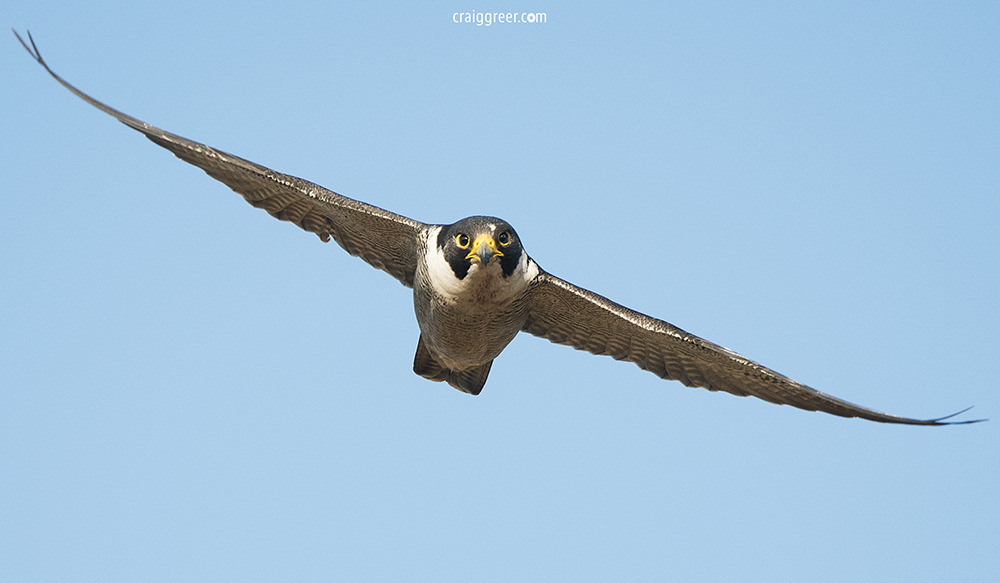Speed, agility and power — Peregrine Falcons are the Ferrari of the skies
Peregrine Falcons can fly at speeds of 242 mph.
What do Ferraris, Golden Eagles and Cheetahs all have in common? You guessed it -- none of them can keep up with the world’s fastest animal, the Peregrine Falcon.
Recorded in 2018 in its hunting dive or “stoop” at a speed of 242 mph, Falco peregrinus is at least 10 mph quicker than the fastest Ferrari, 40 mph faster than its nearest avian competitor, the Golden Eagle, and well over three times faster than the Cheetah, which at 68 mph is the fastest land animal on Earth.
Found on every continent other than Antarctica and the New Zealand group of islands, Peregrine Falcons achieve these remarkable speeds while honing in on and taking fast and agile prey such as doves and pigeons.
Female Peregrine Falcon defeathering an unlucky Crested Pigeon in preparation for feeding its two week-old chicks.
Recent research has confirmed that Peregrine falcons aren’t simply diving at terminal velocity to take prey by surprise -- the high speed generated in the stoop enables the production of higher aerodynamic forces for maneuvering, allowing these exceptional apex predators to catch birds more adept at evading their nemesis at slower speeds.
During breeding, the more compact male Peregrine will do the bulk of the hunting, bringing in prey for the female while she incubates and then feeds her offspring once hatched.
Hunting usually takes place quite some distance from a Peregrine’s nest or ‘eyrie’, which is typically located on the ledge of a cliff face, a tall city building or an abandoned stick nest of some other raptor species.
Peregrine Falcon chows down on a fresh kill.
Occasionally, Peregrine Falcons, like the pair friends and I have observed in South Australia’s Barossa Valley, choose a large tree hollow to raise their young.
For a number of years we’ve delighted in observing -- from an excellent vantage point that’s safe for the birds -- the breeding cycle of this pair whose nest sits high above a path traversed by humans oblivious to the going ons above.
We’ve had the privilege of seeing these amazing birds transition from cute-as-pie fluffy white balls to sleek, beautiful chocolate caramel juveniles, before moulting into their adult plumage characterised by a black hood, slaty-grey flight feathers and barred buff-coloured underparts.
Peregrine Falcon chicks patiently awaiting their dinner in the nest hollow.
If you’re yet to see a Peregrine Falcon, whether in the city or the country, set your gaze to the skies whenever you have the chance, you may just get your first view of the world’s fastest animal doing its thing at 242 mph.
If you’re keen to observe the development of Peregrine Falcons from nestlings to fledging, you don’t necessarily have to see them in the wild. Thanks to the internet and the initiative of some dedicated people around the world, there are number of Peregrine Falcon nest cams you can follow, including:
367 Collins Street Peregrines, Melbourne
Great Spirit Bluff Falcons - Minnesota, USA
UC Berkeley Peregrine Falcon Nest Cam, USA
Salisbury Cathedral Peregrine Falcon Nest Cam, UK




